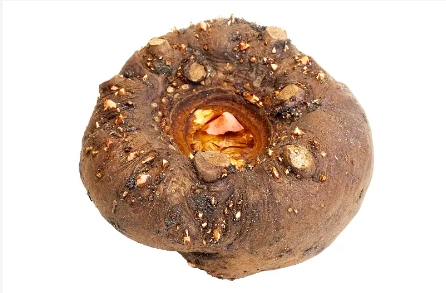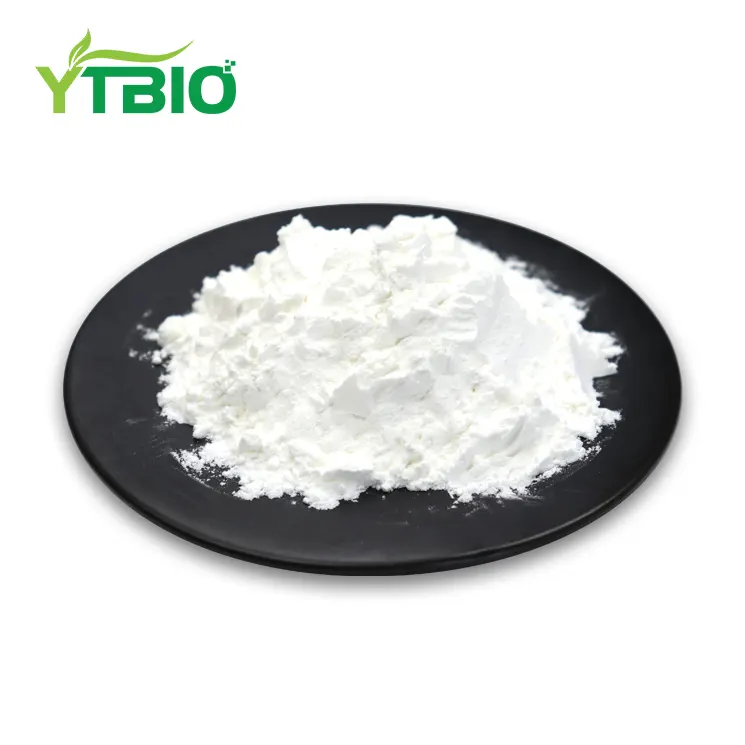Konjac glucomannan KGM
Detection method: HPLC
Source: Konjac
Shipping speed:1-3 days
Inventory:In stock
Certificates:HACCP, HALAL, KOSHER, ISO9001, ISO22000, FDA
MOQ:25KG
Package:25Kg/barrel
Sales group:not for individual customers
- Fast Delievery
- Quality Assurance
- 24/7 Customer Service
Product Introduction
What is Konjac Glucomannan?
Konjac glucomannan powder is the best among all dietary fibers. It contains no calories, has a feeling of fullness, can reduce and delay the absorption of glucose, inhibit the synthesis of fatty acids, and has excellent fat-reducing and slimming effects. Konjac glucomannan can not only reduce fat, but also help ecological laxatives, stabilize blood sugar, lower blood lipids and fight fatty liver. It is safe and has no toxic side effects. Due to the physical and chemical properties of glucomannan such as high viscosity, high water absorption, and rapid expansion, the processing technology of konjac is limited. The purity of konjac glucomannan in existing konjac foods is generally low, and people even consume glucomannan. few.
Konjac glucomannan (KGM) is a non-ionic water-soluble polymer polysaccharide with a molecular formula of (C6H10O5)n, consisting of d-mannose and d-glucose connected through β-(1,4) glycosidic bonds, with an acetyl group in a molar ratio of 1.6:1 or 1.4:1. Acetyl group is a special presence in the molecular structure of glucomannan. It not only affects the hydrophilicity of glucomannan, but also affects the gelling properties of glucomannan. Under alkaline conditions, removal of acetyl groups can promote the formation of irreversible gels in glucomannan. The main methods for determining glucomannan content include phenol colorimetry, gas chromatography Fehling titration and 3,5-dinitrosalicylic acid colorimetry. Among them, the 3,5-dinitrosalicylic acid colorimetric method is relatively simple and low-cost, and is an ideal method for determining glucomannan content. Glucomannan is widely used in the food industry, as well as cosmetics, biopharmaceuticals and other fields.
Glucomannan is an excellent dietary fiber that is not absorbed, does not contain calories, makes you feel full easily, and can reduce and delay the absorption of glucose. With the improvement of modernization level, people are increasingly favoring green and pollution-free products. The demand for konjac glucomannan is increasing and its application scope is getting wider and wider. Konjac glucomannan’s special monosaccharide composition and molecular structure determine its special physical and chemical properties.

What are the benefits?
Lose fat and lose weight
Keithley from the United States conducted a study to study the mechanism of action of KGM by consuming KGM on dieters (7 groups of clinical trials, 39 obese people in each group). Studies have found that KGM plays a certain role in weight loss, whether in a normal diet or a high-calorie diet. They speculate that the mechanism of KGM weight loss is that the intake of KGM food increases the viscosity of gastrointestinal contents, thereby prolonging gastric emptying time and increasing people's feeling of fullness, while reducing the small intestinal food absorption rate and reducing postprandial glucose and insulin levels. fluctuation. Research results from West China University of Medical Sciences further confirmed this effect. After consuming konjac powder for 30 days, the weight loss rate was 78.4%, with a range of 0.5-4.7 kg, and individual differences are large.
Eco laxative
Konjac glucomannan KGM absorbs water, increases stool volume, and improves intestinal flora; intestinal bacteria ferment KGM, produce short-chain fatty acids, and stimulate intestinal peristalsis, all of which are beneficial to defecation. Studies by Zhang Maoyu of West China University of Medical Sciences and others have shown that consuming KGM for constipated patients can increase the daily fecal wet weight (equivalent to 11.4 grams of weight gain for 1 gram of konjac powder) and fecal water content; it can also shorten the time for food to circulate in the intestines and the average defecation time. time; can increase the number of bifidobacteria. Consuming KGM produces an effect similar to natural defecation, with no diarrhea and is an ideal choice for patients with chronic and habitual constipation.
Stabilize blood sugar
Diet control is an important measure in the treatment of diabetes. Konjac glucomannan KGM is not digested and absorbed, contains no calories, has a feeling of fullness, and can reduce and delay the absorption of glucose. It is a good supplementary food for diabetes. Research shows that KGM can significantly improve glucose metabolism, while insoluble fiber has no significant effect. Huang Chengyu of West China University of Medical Sciences and others studied the effect of KGM on blood sugar in patients with diabetes. The results showed that KGM has a blood sugar-lowering effect, and the blood sugar-lowering effect on severe patients is better than that on mild patients. It is also more effective in reducing postprandial blood sugar and fasting blood sugar. At the same time, KGM delays glucose absorption and also helps suppress hypoglycemia.
Lower blood lipids and fight fatty liver
Plasma lipids generally measure cholesterol and triglycerides. KGM helps lipid metabolism and can reduce cholesterol and triglycerides. Professor Zhang Maoyu used KGM food to study 110 patients with hyperlipidemia. After 46 people ate konjac, serum TG (triglyceride), TC (cholesterol), and LDL-C (low-density lipoprotein cholesterol) were significantly reduced, and HDL-C (high-density lipoprotein cholesterol) was significantly increased; fatty liver disease improved. , lower blood lipids. When blood lipids reach normal levels, they do not continue to decline and play a role in regulating lipid metabolism and preventing hyperlipidemia.
Nature
Water solubility and water retention
Konjac glucomannan KGM molecules contain a large number of hydrophilic groups such as carbonyl groups and hydroxyl groups, which can combine with a large amount of water through molecular dipole, hydrogen bonding, induced dipole, instantaneous dipole and other forces to form huge molecules that are difficult to free. move. Konjac glucomannan solution is a non-Newtonian fluid sol, and its water retention capacity is dozens or even hundreds of times its own weight. However, during the process of dissolving glucomannan in water, since the diffusion and migration rate of water molecules is much greater than that of glucomannan molecules, the glucomannan particles swell and the particles tend to stick to each other and form blocks. If it is not heated, the water solubility will be poor within a certain period of time.
Thickening
Konjac Glucomannan powder has a high viscosity in aqueous solution due to its large molecular weight and strong binding ability to water. The viscosity of 1% konjac powder can reach tens to hundreds of pascals per second, which has a good thickening effect. Research shows that at the same concentration, the viscosity of glucomannan sol is much higher than that of gum arabic, carrageenan, xanthan gum and other thickeners. Glucomannan has no charge and is a non-ionic polysaccharide that is less affected by salt in the food system. In addition, glucomannan exhibits good synergistic thickening effects when mixed with other thickeners. Therefore, the application of glucomannan in food can reduce the use of thickeners and save production costs.
Gelability
The glucomannan solution can become thinner under shear, reduce the viscosity, and have a certain fluidity. After standing still, the fluidity becomes smaller and a gel is formed. Glucomannan can form heat-stable (thermally irreversible) gels and heat-labile (thermally reversible) gels under different conditions. Glucomannan has strong gel synergy with carrageenan, xanthan gum, etc. When mixed with carrageenan, the greater the proportion of glucomannan, the stronger the gel toughness; on the contrary, the gel is more brittle. Konjac glucomannan forms a thermally reversible gel under the above conditions. However, when heated under alkaline conditions, the gel is thermally irreversible. For example, in the presence of NaOH, KOH, Na2CO3, K2CO3, etc., in a heated environment, the acetyl groups on glucomannan will fall off, forming a stable gel state. Even under 100°C cyclic heating conditions, the acetyl groups will not condense. The glue strength is also basically unchanged.
Film forming property
Glucomannan sol can be heated and dehydrated in an alkaline environment, and then processed appropriately to form an edible film material with good film-forming properties. The film is stable in cold water, hot water and acidic solutions, and can be used in the food industry to make food condiments and packaging materials in the food industry, as well as for coating films on fruits and vegetables to keep them fresh. In medicine, they can be used as microcapsules for targeted delivery of drugs after appropriate modification. Furthermore, the addition of humectants can alter the mechanical properties of the membrane. As the amount of moisturizer increases, the strength of the film decreases and the softness increases. Adding hydrophilic substances can improve the permeability of the membrane; adding hydrophobic substances can reduce the water permeability of the membrane.
Derivative
Because glucomannan has a unique main long chain structure, there are many hydroxyl groups and replaceable active groups on its main chain and branch chains. In order to effectively improve the original stability and viscosity, improve suspension or film-forming properties, and increase its solubility, different chemical methods can be used to carry out various esterification, etherification, methylation and other derivative reactions and hydrolysis reactions. Glucomannan acylation modification uses the hydroxyl group on its molecular chain to react with the acyl carbon chain (carbon atoms 2 to 12) under certain conditions to generate a new acylation product, which is an esterification modification. Glucomannan modified by acylation is thermoplastic, and its thermal properties and mechanical properties can be adjusted through the acyl structure.
Develop applications
Traditional Konjac Application
Food additives: Because KGM has high water retention, swelling, thickening, gelling, emulsifying, suspending, and cohesive properties, its performance is better than that of agar, carrageenan, gelatin and other commonly used food glues. As a food Additives are increasingly used in applications. Such as ham sausage, dairy products, biscuits, jelly, etc.
Limitations: Because Konjac Glucomannan powder has high water retention, swelling, and thickening properties, it limits the processing technology and eating methods of konjac, making the utilization efficiency of KGM extremely low, and its health care functions cannot be highlighted.

Innovative New Konjac Application
Konjac tablets and konjac granules: Overcoming the processing technology of konjac, changing the use method of konjac, greatly increasing the content of KGM, allowing the function of KGM to be fully exerted.
Konjac glucomannan KGM supplier
Yuantai Organic Bio is committed to providing customers with the highest-quality bulk Konjac Glucomannan powder and services so that every consumer can enjoy natural, healthy, and high-quality food. If you have any inquiries or needs about our products, please feel free to contact us, and we will reply to you as soon as possible.

_1737093401309.png)




